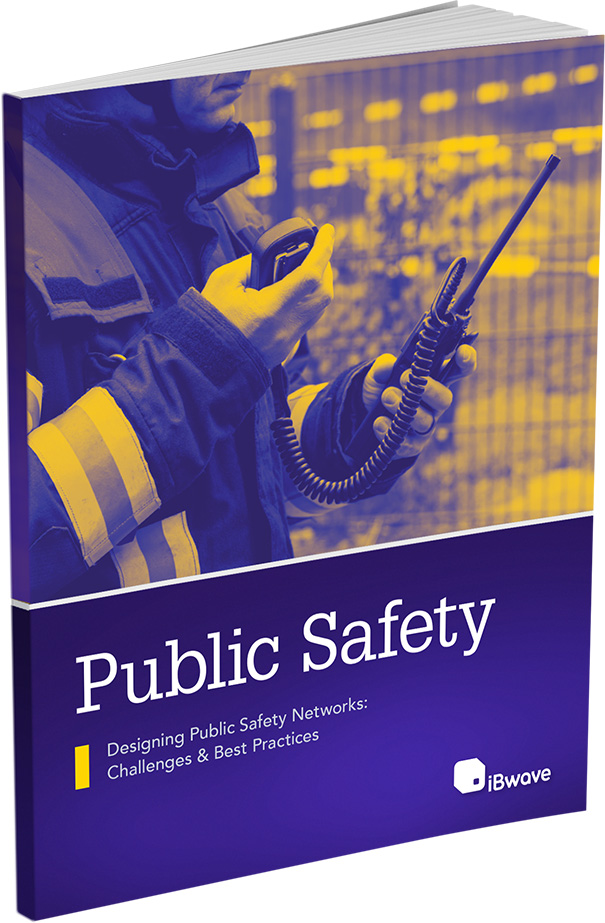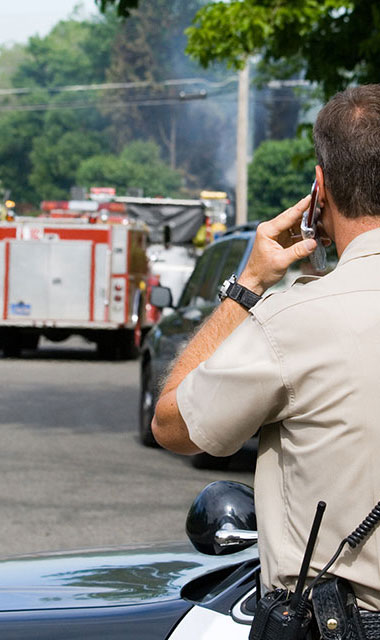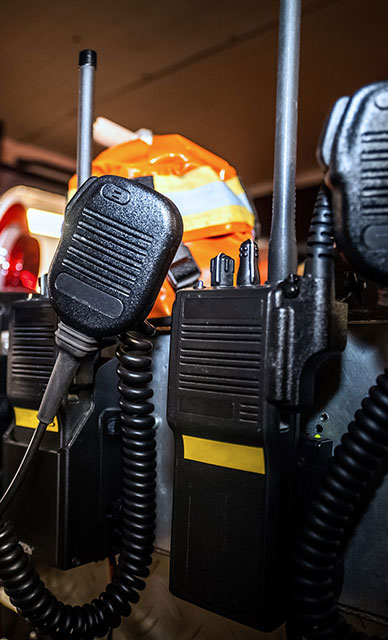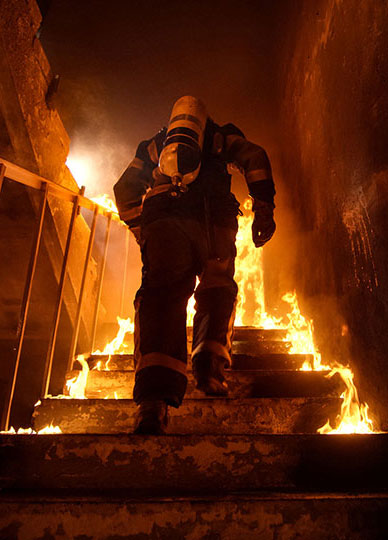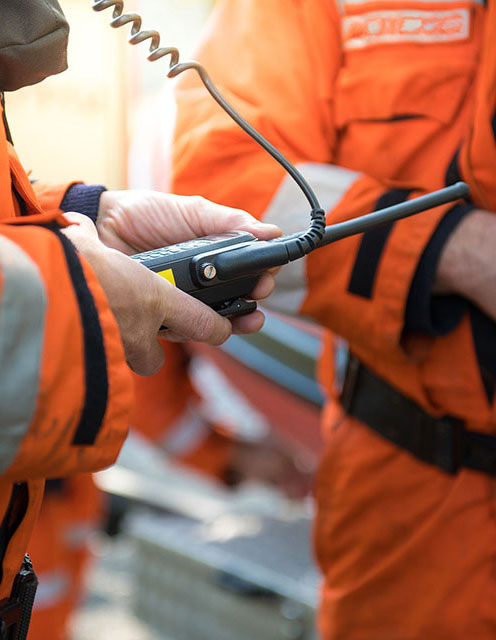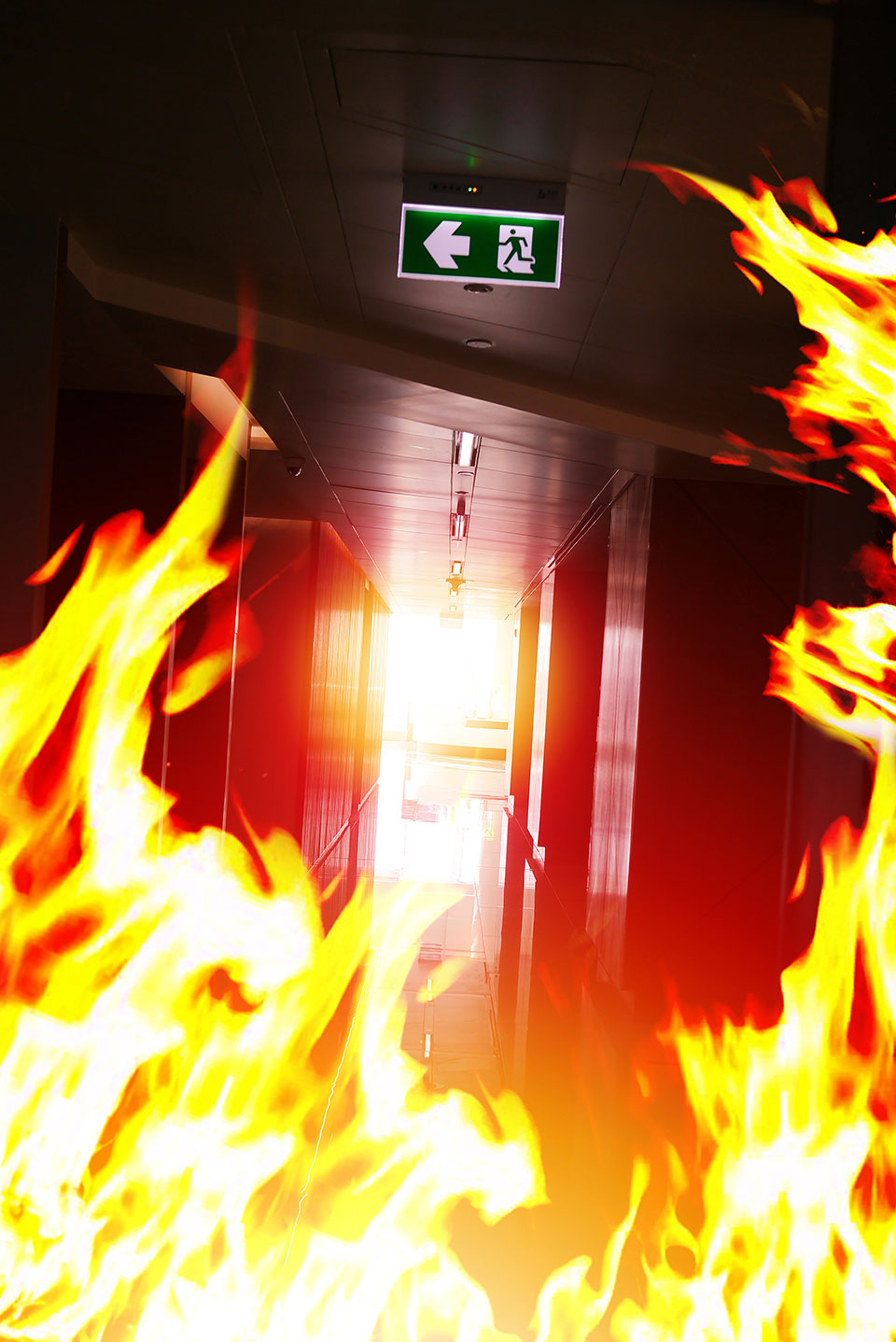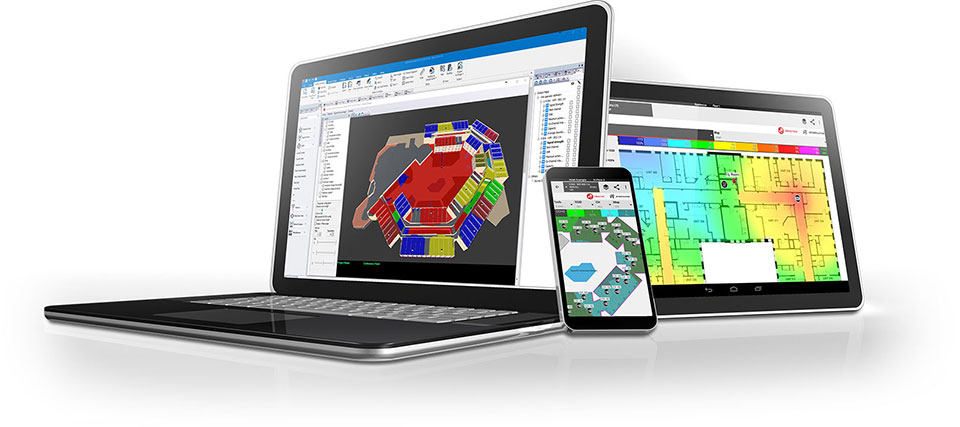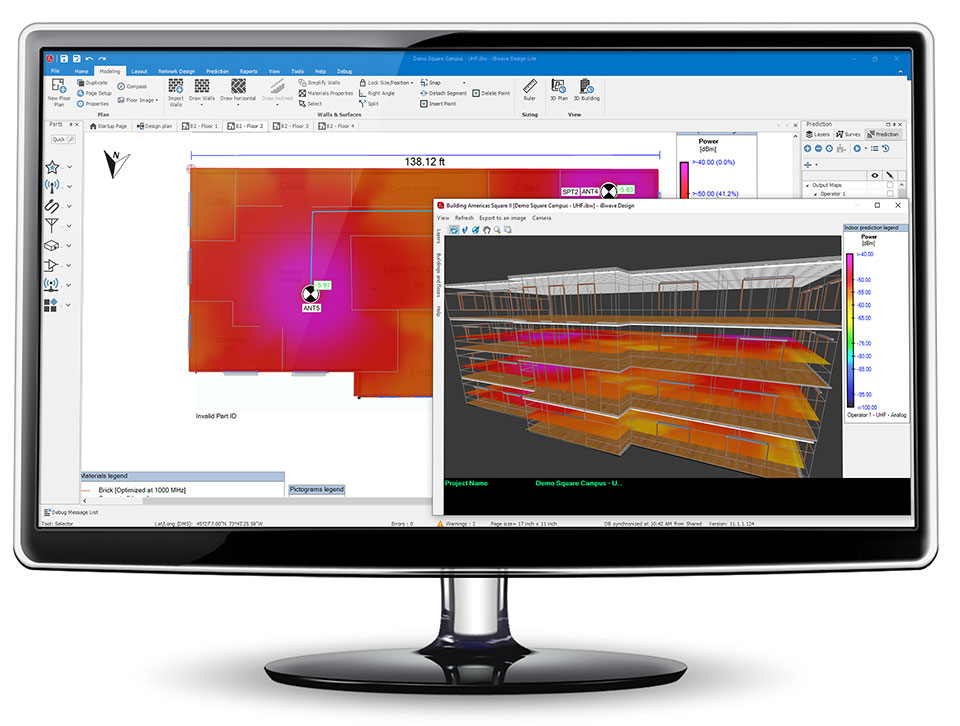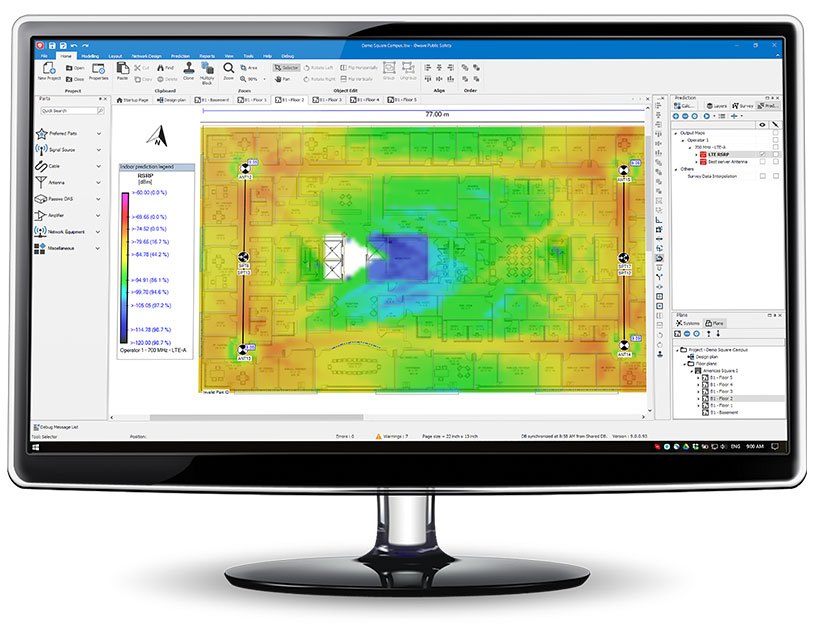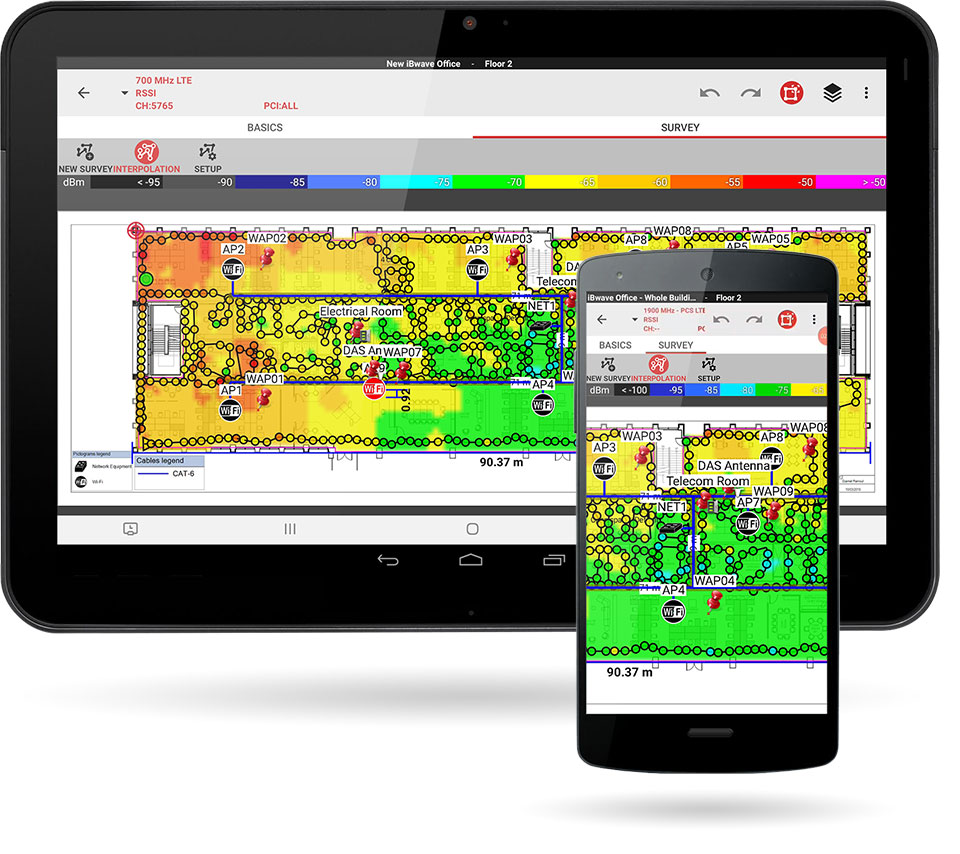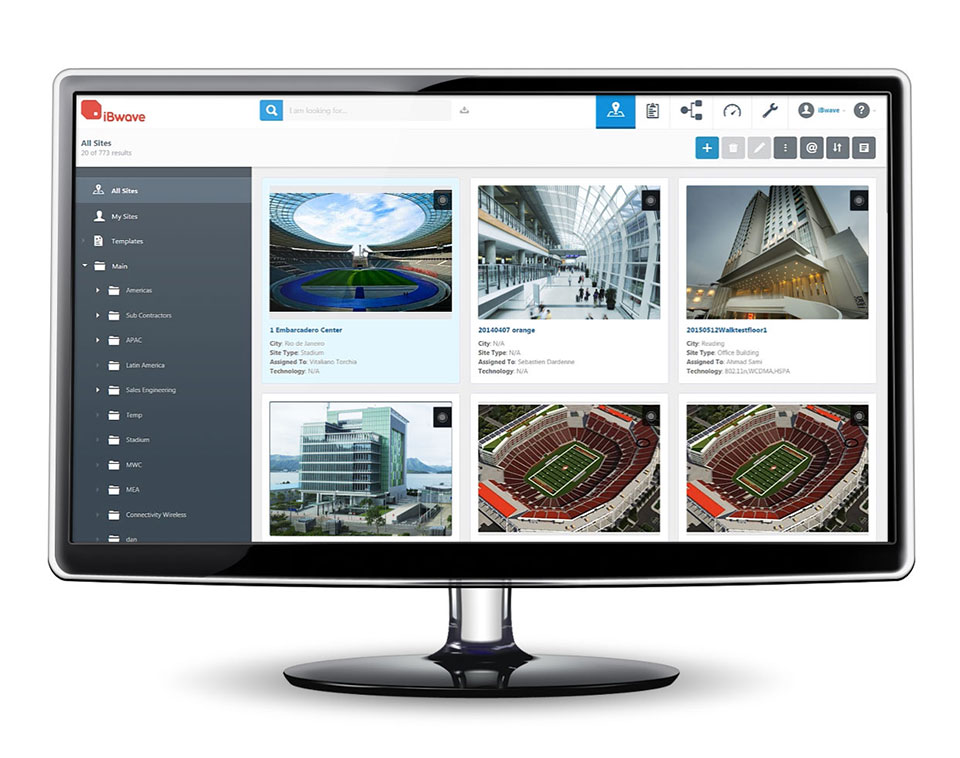Designing Public Safety Networks
Challenges & Best Practices
Introduction
Public Safety Networks don’t have degrees of quality – they either work or they don’t. And with something as important as communication in the event of an emergency, a poor RF signal can be catastrophic for first responders. There’s a lot to think about – building regulations, fire codes and safety laws, heavy voice and data traffic on the network, and connecting hard-to-reach areas.
Our latest eBook – Designing Public Safety Networks – tackles the subject from every angle. It takes a ‘safety from the ground up’ approach – how unique Public Safety Network challenges need to be addressed at every stage of the design process, from conceptualization to completion. It provides in-depth coverage on challenges and best practices, as well as an overview of IFC and NFPA guidelines used to standardize PS network design.
When Safety Is More Than Talk
Chances are you’ve never been on the receiving end of the countless benefits of a public safety network operating during a non-drill emergency situation. That’s mostly due to the low odds of being caught in a building during a fire or emergency event that necessitates evacuation and urgent action of first responders. Public Safety Networks (PSNs) aren’t like elevators, washrooms, or security camera systems – that is, they’re rarely if ever used. In spite of the fact that most in-building PSNs will never be used in an actual emergency, their reliability, serviceability, and effectiveness remain paramount. They have to be there; they have to work without fault and as free from the risk of catastrophic failure as possible. If the elevator is out, there’s always the stairs – but if the PSN goes down during an emergency there is no such recourse of a plan B. Safety must be unconditional.
But Public Safety Networks don’t operate solely for the safety and efficiency of first responders. While their ability to communicate seamlessly during any emergency is paramount, those needing assistance must also have unfettered, reliable access to a cellular network if distress calls are to be made. With 80% of 911 calls originating from a cellular network, and often sent from areas that suffer from serious propagation obstacles, such as present in underground parking areas, stairwells or elevator shafts – the integrity and coverage of a cellular network within public and commercial buildings is imperative. That way first responders can best reach and render aid to those most in need.
Without a doubt, a Public Safety Network is the most important safety subsystem of any new public building construction project.
There are few jurisdictions lacking building fire safety codes, but those regulating Public Safety Networks are still very much in development and early implementation phases. In North America this is due in part to the recent allocation of dedicated bandwidth, but perhaps the biggest driver has been society’s transitions away from a wired data & voice communications infrastructure to a wireless one. Nor has the technology that underlies and drives our communications stood still – complexity, capacity, and speed continues to accelerate. From two-way devices with an analog signal to digital multi-channel voice, video, and data ones with an enormous appetite for bandwidth and corresponding likelihood of network congestion and failure. While the technology has improved immeasurably, the chances of network failure have increased.
The way we communicate and exchange information has affected the physical structures where we live and work, forcing architects, contractors, builders, and policy makers to make wireless signal propagation more efficient in our concrete, metal, and glass-coated buildings. Public safety networks must be able to operate in areas that aren’t normally RF-friendly.
This publication takes an in-depth look at PSNs. Starting with a little background on their origins, we’ll be tracing a path to their current importance with an emphasis on what it takes to design, install, commission, test, and maintain a public safety network.
The Public Safety Network: A Historical Need
The importance of efficient, stable communication between first responders and those in distress has been recognized since the advent of two-way radio voice communications – but the need to establish, regulate, manage and enforce a standards-based network is one that has arisen over the past 2 decades.
Just as building codes have continued to evolve, so have those designed to allow for the operation of reliable Public Safety Networks. More effort is going into the standardization of national fire and building code regulations than at any other time, and the importance placed upon these requirements and their application is only going to grow. But we’re still far from one set of standards or regulations governing all jurisdictions within national borders, and further still from agreeing upon world standards.
Public Safety Networks, also referred to as Emergency Responder Radio Communications Systems (ERRCS), are currently experiencing the same explosion in growth and perceived importance as smoke detectors and sprinkler systems in the early 1990s. They’re also generating a similar demand for expertise in their design & installation, and an exponential increase in the manufacturing of compliant equipment. No longer considered nice-to-have, PSNs are mandatory, regulated, and lapses in design are leading to rules enforcing compliance.
The era of the Public Safety Network is shifting into high gear and the urgency is palpable. A spike in the volume of retrofits, new constructions requiring compliant PSNs and the equipment needed is sure to place stress on stakeholders. This will invariably lead to design flaws, cut corners, and potentially, the loss of life. Clearly, many extant PSNs weren’t designed to accept the progression of technology and the increases in demand for data capacity. Older networks must address the issue of future compatibility and those in planning stages need to have sufficient scalability to take on the inevitable growth in data usage. And as the networks progress in lock-step with technology, so do the devices used by first responders. Networks expand in size & potential, followed by the devices they connect to, and they in turn increase in performance and complexity spurring another phase of development in the network. Ultimately, the PSN is a communication ecosystem that needs indefinite room to grow.
Designing a robust, reliable PSN isn’t a matter of chance, it’s a careful, considered process guided by principles of accuracy, foresight and the fact that it may only see use during a fraction of the lifetime of the building in which it is housed. It has to work right, and be ready to work right at all times. Without a doubt, a PSN is the most important safety subsystem of any new building construction project.
A History of The Spectrum
The United States, Canada, and the EU have well-established conventions for the use of the radio spectrum. Indeed, without regulation, the free-for-all use of public airwaves would create a nightmarish scenario of interference, impeded bandwidth, and eventually its collapse as a practical operating foundation for radio communication. In the case of the United States, the FCC developed a comprehensive study of radio spectrum requirements in 1996, but because they were without a large enough data sample from first responders it was deemed necessary to begin an evaluation of the needs of Federal, State and local public safety agencies. Thus, the PSWAC (Public Safety Wireless Advisory Committee) was created.
The PSWACs final report was alarming. It determined that a serious lack of contiguous radio spectrum available to first responders was setting the stage for a critical, potentially dangerous bottleneck in communications that would likely manifest itself at the worst possible time: a national disaster. The conclusion: by 2010 an additional 97.5 MHz of radio spectrum would be needed. After the findings of the PSWAC Congress exclusively allocated 24 MHz of spectrum in the 700 MHz band for public safety network use. The 700 MHz band is ideal for use in large-area coverage networks and can accommodate the growing number of public safety personnel. While a large portion of the 700 MHz spectrum was occupied by analog TV transmissions, a major problem in signal-dense urban areas, they have since been replaced by digital television signals. With DTV operating on the 600 MHz radio spectrum, the 700 MHz became available for PSNs. In the US, the 758-769 and 788-799 MHz spectrums were mandated to the First Responder Network Authority (FirstNet), which is responsible for building and operating the nationwide broadBand public safety network. (See FirstNet). In Canada the 746-806 MHz portion has been allotted to PSNs, while the EU has adopted the 694-790 MHz frequency range.
A Question of Frequency
The freeing up of the 700 MHz frequency was a boon to first responders. It allowed for the first in many standardizations to take effect across international jurisdictions. Having exclusive access to a wide spectrum is an advantage – but bandwidths have performance fingerprints, and no two are exactly alike.
Neither high nor low frequency signals offer an advantage in terms of capacity or coverage, which isn’t to say they’re on par when it comes to PSNs. Lower frequencies exhibit much better penetration values, which explains why even in the depth of a concrete tower block, fans of Full House were still able to see a clear image with a coat hanger as a receiving antenna. Lower frequency signals propagate farther, but because wavelength is proportional to required transmission-antenna size, their use by emergency responders is simply beyond the realm of the practical. Higher frequency bands, such as 700 MHz, cannot achieve the same building penetration. However, this is a problem solved by well-designed PSNs which will include boosters, amplifiers and repeaters, and by the corresponding mobility awarded by portable transceivers. The ease of deploying portable communication equipment and exclusive bandwidth allocation makes a dedicated spectrum the only choice for PSNs.
Agreeing to Agree
Logic dictates that the Canada and US operate in nearly identical bandwidths. Because several cosmopolitan centers straddle their borders, the interoperability of separate emergency response systems is crucial. Indeed, they have cooperated countless times in the past, both to events occurring along their shared border, and almost as often when emergency personnel are called across borders to help in coordinated relief operations.
Interoperability is mission critical as evidenced by the establishment and definition of the P25 System which now operates in over 80 countries. The P25 system, first developed in 1989, is a set of standards created for PSN digital mobile radio intended to supersede analog radio transmission and add scalable capacity for data, voice and high-throughput communication. Europe and the rest of the world have opted for the terrestrial trunked radio system (TETRA) transmitting over the 400, 700, and 800 MHz bands. Both standards were developed to be compatible with existing analog systems until their eventual phasing out.
Today & Tomorrow
P25 and the analogous TETRA systems are the bedrock upon which modern PSNs are being built. Frequency exhaustion, bandwidth congestion, and an increasing amount of transmission sources have led to the need to allocate dedicated frequencies to PSNs. Their choice was dictated both by the ability to function with existing analog equipment, their capacity to expand functionality and accept new technologies and higher loads on capacity as well as more complete coverage, as well as their crucial RF propagation properties.
What remains unknown is the scope and rate of change communication technology will undergo beyond the observable horizon.
Stakeholders – Organizing, Collaborating, Regulating
In the US, several organizations have the establishment, standardization, and regulation of public safety networks, as their primary mission. Among them: The National Fire Protection Association (NFPA), FirstNet (First Responder Network Authority), The Safer Buildings Coalition, and the FCC, which has ultimate jurisdiction over the licensing of public airwaves. All of them play a part in the past, present and future of PSNs. Since they figure prominently in this publication, each merits an introduction as players in the public safety network arena.
The National Fire Protection Association
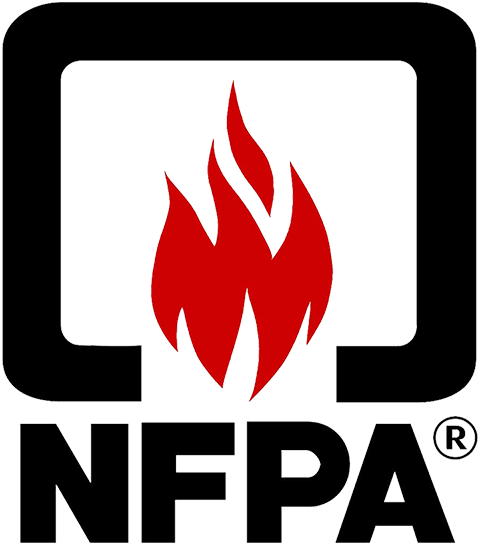
Founded in 1896, the NFPA was an insurance industry initiative established for standardizing fire-sprinkler technology. This US-based codes and standards association boasting 50000 members is now tasked with developing, promoting, and encouraging a comprehensive list of fire safety codes including those for public safety networks. Their outreach programs are extensive and fronted by their mascot, Sparky the Dalmatian. Though he was not available for comment, he will still be receiving a complimentary copy of this eBook.
With over 300 published codes & standards, the NFPA is one of two principal sources which US state authorities draw upon. The other is the IFC.
The International Fire Code

The International Fire Code (IFC) exists under the auspices of the International Code Council (ICC). A membership association comprised of fire officials, architects, engineers, builders, contractors, building equipment manufacturers, AHJs (authorities having jurisdiction), state and local government, and makers of safety and communication equipment; the ICC’s mission is to develop models and standards applicable to the design and construction of safe buildings.
Among its most important set of codes & standards are those set out by the IFC. The IFC has established a consensus of minimum standards for fire prevention and protection systems. The IFC publishes revisions to its code every 2-3 years, in full recognition that their standards, like the building, safety, and communication technology they seek to affect, are in a constant state of flux.
More relevant to the PSN are guidelines set out in IFC 510, and a well-worn copy is a good sign it’s been used by the designer as a key resource and that they’re up to speed on the specifics.
First Responder Network Authority

Since its creation in 2012, the First Responder Network Authority, better known as FirstNet, has been building an extensive interoperable public safety broadBand network – as its name so aptly suggests. Ultimately, it will be the central body responsible for its operation, maintenance, and upgrading, while ensuring it evolves along communication and safety technology.
It is to FirstNet specifically that the FCC licensed the 758-769 and 788-799 MHz spectrums after they were abandoned by analog TV broadcasters. FirstNet hopes to coordinate the thousands of currently incompatible mobile radio networks operating in the US used by firefighters, law enforcement and emergency services personnel.
The Safer Buildings Coalition
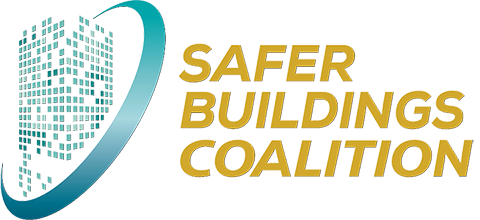
The Safer Buildings Coalition has in-building public safety communications advocacy and the policies that support it as its one key objective. Mandated by the FCC in 2012, The Safer Buildings Coalition works together with the NFPA and IFC to ensure fire codes and standards are kept current, and together these two organizations help stakeholders stay up to date on best practices.
The Safer Buildings Coalition and FirstNet are the only two organizations dedicated to the public safety wireless communication facet of first response and emergency operations.
Beyond the Borders of North America
The regulation of Public Safety Networks across the EU, Asia, Africa, and the Middle East are under the specific jurisdictions of their governing bodies. Even in the case of the EU, it is the national government that has responsibility for establishing regulations – no one set of standards has ever been adopted. It is outside of the scope of this publication to present a detailed exploration of international fire safety codes, and by extension public safety networks. However, those created by the IFC and NFPA often serve as the basis for developing equivalents abroad. It is always best to contact AHJs in the country where a new building project requiring a PSN is located.
The failure of PSN isn’t a matter of inconvenience, it’s a matter of life & death. If the PSN goes down during an emergency there is no such recourse to a plan B. Safety must be unconditional.

Public Safety Networks
Challenges & Fundamentals
The Challenges of Creating a PSN
First responders and emergency personnel don’t have things easy. During an emergency, they’re the ones trying to get into a building while the rest of us are trying to get out. That usually means a large volume of two-way traffic competing for a finite number of access points. Effective, coordinated communication between first responders is key to controlling confusion and ensuring an emergency doesn’t become a tragedy.
However, as advanced as communication technology is, and promises to become, there are laws of physics which we’re not presently able to circumvent. Buildings, materials, and the objects, employees and other RF signal obstacles in them are a minefield that Public Safety Networks need to negotiate the moment an architect drafts the first line in any new building design.
Each building has its own RF propagation profile, and while recently a lot of effort has gone into designing living areas that are friendlier to signal transmission, areas used for emergency access & egress, and indeed many of those corridors used to reach them; stairwells, elevators, emergency and everyday entrances, do not always enjoy the same quality of coverage. Many areas in which emergency personnel need to operate suffer the worst RF signal coverage, a flaw that can be fatal.
Hospitals are an excellent example of the inherently complex RF and PSN environment. Hospitals have a high proportion of active and passive transmitting devices, are occupied by staff who have more than one device, plus a constant flow of visitors with their own devices. Data, voice, video, IoT and other stresses affect the capacity potential of a hospital’s network, so a fully functional, robust and redundant PSN in that environment is doubly crucial.
Conversely, the public safety network infrastructure installed in any building needs to be hardened against fire and premature structural failure, necessitating a high degree of advanced planning, testing, equipment purchase and installation lead times, and most importantly compliance with all applicable local, regional, state, provincial and federal fire codes and standards governing public safety networks. It is the very definition of a “case-by-case” scenario.
Finally, any PSN must be separate and operate autonomously from a civilian wireless or cellular network within any building. The codes and standards for uninterrupted power, equipment, coverage, and hardening of infrastructure are far more stringent for a public safety network than for its civilian counterpart. It needs to be able to withstand and reliably continue operation in the harsh conditions it will be subjected to during a fire emergency. Robustness and redundancy are key and written into the codes outlined by the NFPA, IFC and Safer Buildings Coalition alike.
In-Depth: RF Challenges
The typical commercial or public building can be likened to a Faraday cage filled with RF signal attenuating bodies and material. It’s not a place wireless communication comes easy. Modern commercial and public buildings are usually of steel-framed construction, while building materials are reinforced concrete, steel, and aluminum. Most of the RF signal that makes it into a structure manages to penetrate via openings such as windows, corner joints, grid openings, and non-metallic ventilation ducts. Openings with slot-like configurations are more forgiving at higher frequencies which can negotiate smaller apertures. In short, for radio waves, getting in or out through any of the available openings is never going to be anything less than running the gauntlet.
Concrete remains the predominant construction material, and it is responsible for a large part of the path loss. Four inches of concrete can shave off 12 dB, while reinforced concrete will add more than twice that amount of degradation to a radio signal. And that’s just concrete. An examination of material attenuation in the table opposite illustrates the armor buildings place between transmitters and receivers. It’s an admitted inconvenience for businesses. But it’s potentially deadly for first responders.
Consider that these RF signal attenuation values apply to an empty building. Absent from the equation are employees who can number in the thousands, each carrying a device that might contribute to interference. Nor does it take into consideration desks, filing cabinets, and computers – and then there’s miles of metal water conduits, wiring, competing wireless network infrastructure, and shielded subterranean levels. Be glad you’re not an RF signal in a large public building.
Tinted low-emissivity windows, a must in today’s climate of sustainable resource management, also create a barrier against radio transmissions. A single-paned window can absorb 10 dB (@ 900 MHz) while one with single-layer sun protection and silver reflective coating ups the ante to 25 dB (@ 900 MHz). Signal attenuation values will tend to be lower in the 700 MHz spectrum. Multistory commercial buildings might be stunning at sunset, but because they’re clad in acres of mirrored, reflective surfaces with a varying transparency to radio waves their aesthetic appeal comes at a cost.
Modern building design has gone to some lengths to address these concerns. iBwave flourishes because its sole mission is to make wireless network design easier in demanding environments. But the facts dictating safe building design that adhere in the strictest sense to fire safety codes help save lives but make life for the RF signal a matter of touch & go. Therein lies the paradox.
Emergency stairwells, fire doors, exits, and elevator shafts will experience the highest traffic during an active emergency, and their architecture renders them even more hostile to an RF signal, a fact which necessitates attention as these areas are not always deemed essential for civilian wireless network coverage.
Material Attenuation @ 900 MHz
| Glass 0.25” | (6mm) | 0.8 dB |
| Glass 0.5” | (13mm) | 2 dB |
| Lumber 3” | (76mm) | 2.8 dB |
| Brick 3.5” | (89mm) | 3.5 dB |
| Brick 7” | (178mm) | 5 dB |
| Brick 10.5” | (267mm) | 7 dB |
| Concrete 4” | (102mm) | 12 dB |
| Masonry Block 8” | (203mm) | 12 dB |
| Brick faced concrete 7.5” | (192mm) | 14 dB |
| Masonry Block 16” | (406mm) | 17 dB |
| Concrete 8” | (203mm) | 23 dB |
| Reinforced Concrete 3.5” | (203mm) | 27 dB |
| Masonry Block 24” | (610mm) | 28 dB |
| Concrete 12” | (305mm) | 35 dB |
Source: https://ftp1.digi.com/support/images/XST-AN005a-IndoorPathLoss.pdf
In-Depth: Hardware Challenges
Large commercial buildings are built to minimize the risk of fire. That’s the good news. Fire sprinklers, comprehensive smoke detection equipment, and a fire alarm system contribute to the safety measures occupants have come to expect.
In-building wireless/cellular equipment and infrastructure is designed to withstand the rigors of everyday use. Their tolerance to heat is limited to what it can generate through normal use, or as might be experienced in enclosed spaces such as wire conduits in walls. Antennas, boosters, and repeaters mounted in exterior areas are protected against the elements, so can shrug off rain, snow, sun and extreme humidity or dryness. The same applies to internal equipment. They’re ideally adapted to the normal range of environmental conditions they’re likely to experience in a commercial building.
Makers of in-building civilian-use wireless and cellular network equipment manufacture their products to tolerances suited to the operating conditions cited above. But they’re not required to make them fire hardened, or able to withstand water infiltration. The codes and standards that apply to PSNs do, and as time goes on you can expect them to be strictly enforced.
The NFPA sets out requirements for the durability of emergency communications equipment & infrastructure. Pathway survivability, as it is termed, establishes those conditions PSN hardware must withstand. In most cases a Level Two pathway survivability translates as equipment with NEMA 4 two-hour fire-rated circuit, cable and enclosure integrity. While these are the NFPA criteria, remember that local authorities (AHJ – authorities having jurisdiction) may cite longer or shorter survivability values.
PSN hardware is built to NFPA and IFC codes and standards, but often additional enclosures and custom panels need to be custom built, and they too will have to adhere to the Pathway survivability requirements laid out by the applicable national or local codes.
In-Depth: Regulatory & Code Challenges
Currently in the U.S. most state, local and municipal fire codes are either based on NFPA or IFC guidelines, or any combination of the two. In addition, AHJs and fire marshals can modify or add to these guidelines and in effect create unique fire safety profiles for the areas over which they have dominion. Simply put, there is no substitute to complete knowledge of local fire safety regulations that govern new construction and by association the planning, design and installation of fire safety networks. It’s also good policy to maintain an ongoing dialogue with AHJs so that any changes in codes are made known to PSN designers in a timely fashion.
We’ll go over the most important PSN codes and regulations laid out by the NFPA and IFC and leave localized variations up to individual designers. Listing them here would be futile – they number in the thousands and could be out of date in the time it takes to read this sentence. An exaggeration perhaps, but indicative of the volatility of local fire code regulations, and by the speed with which our knowledge of fire safety, best practices, and how PSNs need to adapt to keep up with the constant change. Stay up to speed, and up to code.
NFPA
The National Fire Prevention Association’s public safety network code can be found in NFPA 72. The NFPA 72 National Fire Alarm and Signaling Code first appeared in 1987 and the 2019 edition is scheduled to be superseded in 2022. It’s an evolving work that’s subject to amendment and affected by new research, technology, and best practices. The current volume runs 368 pages, and while the information most relevant to PSNs can be found in chapter 24 it alone carries over 300 paragraphs of code specifications. All of it is important, and so we recommend turning to it as a resource.
In recognition that the NFPA is the body best qualified to advocate its recommendations, we’ll present a brief overview if only as an indication of the intent of its mission.
NFPA 72 requires that each building PSN allow first responders exclusive use of separate distributed antenna system (DAS) also known as a bi-directional amplifier system (BDA). The building might be equipped with a public DAS/BDA for commercial and private applications, but each must operate on different spectrums, and of course the public safety network DAS/BDA will comprise of specialized infrastructure that meets pathway survivability standards a typical cellular needn’t achieve. NFPA coverage requirements must be met, which as we’ve touched upon, means minimum RF propagation values must exist over every square foot of a building. All PSN equipment must also adhere to stringent backup power provisions, also subject to pathway survivability standards.
The NFPA has also developed codes that govern PSN monitoring, available in NFPA 1221. A snapshot of both can be found following the section introducing IFC codes and regulations.
IFC
The International Fire Code, developed by the International Code Council (ICC), serves as the other primary source of codes and regulations overseeing building fire safety, and those controlling public safety network design, installation, testing and monitoring. Section 510 of the IFC sets out precise guidelines for emergency radio coverage in new buildings, covering everything from PSN building permits, technical requirements, RF signal strength and coverage, signal boosters, system design, backup power, approval protocols, and personnel qualifications.
As with NFPA 72 and 1221, the IFC codes and regulations can be adopted in whole or in part, modified, and combined with those of the former to suit the needs or conform to the policies of AHJs.
Here then is an incomplete overview of NFPA and IFC codes and regulations that direct the design, installation, testing and monitoring of public safety networks. You’ll find them in their entirety at https://www.nfpa.com and https://www.iccsafe.org/products-and-services/i-codes/2018-i-codes/ifc/
NFPA & IFC: Codes & Regulations at a Glance
Liability for Public Safety Network Installation
Both the NFPA and IFC outline the necessity for emergency responder radio coverage in all new buildings, while the NFPA goes a step further requiring their installation in existing ones.
Signal Strength & Area Coverage
The NFPA (72 & 1221) sets a target signal strength of -95 dBm with 99% coverage in all emergency service & escape areas, exits and exit passageways, stairwells, elevator lobbies and other areas identified as critical by the acting AHJ or fire marshal. All other areas must meet the same signal strength requirements across 90% of its area. The IFC raises the minimum -95 dBm signal strength coverage across all areas to 95%, while maintaining 99% @ -95 dBm in critical ones.
Donor Antenna Isolation
Antenna can be affected because their transmissions interact with the surrounding building materials, including the enclosure in which they are mounted, or can experience interference with other sources of RF. This can lead to failure or degradation of signal. NFPA 72 establishes a 15 dB isolation value, while NFPA 1221 and the IFC specify a 20 dB one.
Pathway Survivability
NFPA 72 requires that all emergency and Public Safety Network equipment and infrastructure installed in buildings with a 2-hour fire-rated construction demonstrate a Level 2 or 3 pathway survivability, which includes a mandatory 2-hour fire-rating for riser coaxial cabling. All riser and feeder coaxial cabling must be plenum-rated; exhibiting low smoke and flame emission characteristics. The IFC does not explicitly cover pathway survivability.
Back-Up Power
NFPA 72 and 1221, and the IFC require an uninterrupted 12-hour backup battery capable of powering all PSN equipment. The IFC allows for the alternative of a 2-hour battery with emergency generator.
Conclusion
Those, in a nutshell, are the fundamentals of public safety networks. The previous chapters explained the need for PSNs, their history, the importance to standardize the codes and regulations, and an overview of the challenges buildings present to operating a robust, reliable PSN.
The second half of this publication will cover the essentials of building a viable PSN, overcoming challenges, and best practices that can make the endeavor a much easier one.
Public Safety Networks
From Conceptual to Concrete
Creating a PSN. Safety From the Ground Up.
With a grasp of what regulating authorities expect and our PSN design we can transform the requirement into a reality – a code-compliant network.
An important point to note is that there are no off-the-shelf public safety network solutions. Every building presents a unique RF signal propagation profile, from materials to end-use, and from size to locale, to peak hours of operation. They all affect how wireless transmission works within, and how well it’s able to penetrate walls.
As daunting as the individuality of each building is compounded by the sheer number of new ones being erected, a step-by-step approach remains the best way to address the large quantity of variables the PSN designer will encounter. Here are those steps:
1. Communication. Cooperation. Collaboration.
Nothing is more vital to the successful design and installation of a reliable public safety network than open channels of communication between PSN designers, contractors, building owners and AHJs. Transparency, timeliness and an understanding that fire safety is a conversation that never ends are crucial. Technology changes as fast as fire codes – those who determine policy need to understand how a public safety network is designed in response to their legislation. Innovating communication technologies need to be in close quarters with those who affect building technology – each affects the other.
By nurturing an ongoing exchange, stakeholders can be assured that the health & safety of commercial and public building occupants remains a common objective.
There is no better solution to creating, maintaining and fostering the exchange than through a common collaborative platform. iBwave Unity creates an ideal environment for exchange and was designed to serve as a scalable hub where stakeholders can cooperate in real time. A seamless informational and procedural hub speeds consensus and lessens or removes the effects of unilateral actions by stakeholders.
Feeding into iBwave Unity and contributing to the shared data is an indispensable on-site app, iBwave Mobile Note. Ideal for deployment in advance of any planning, it helps create an accurate portrait of actual RF conditions and proximal propagation issues that need to be taken into consideration before breaking ground. There’s more on iBwave Mobile Note on page 20.
Indeed, iBwave Unity is where all essential project information is funneled and hence becomes a necessary part of every step of the planning, design, installation, commissioning and testing of a PSN project. Focus is always an advantage, iBwave provides it.
2. Planning
The first, and at times the most complex part of a PSN project, involves collaborating in concept with architects and contractors so that network designers can work from the most up-to-date floor plans and technical specifications for the new building.
Key are the locations of those areas that are most challenging for RF transmission in the PSN spectrum. Stairwells, elevator shafts, emergency exits, basement and garage areas, mechanical and boiler rooms, emergency and fire equipment rooms, and fire control rooms. Few of these are designed for easy signal propagation, because until recently, they haven’t had to be.
While every square foot will need between 90-95% general signal coverage, and 99% critical coverage, it is those pesky out-of-the-way areas that you’ll need to conquer. And don’t forget, 95%-99% coverage must meet the -95 dBm signal strength requirement. Know your floor plan, understand the materials being used in construction, and read #1 again.
3. Design & Installation
With a current floor plan it’s time to begin the design of your PSN. Coverage is king when it comes to a PSN, so the configuration of network architecture, the type and quantity of antennas, BDAs, cabling, connectors, splitters, amplifiers, power supplies and backup power all need to be determined if your public safety network design hopes to be properly optimized to building design.
It’s essential to be able to test your design but accomplishing that without a physical structure to install it in is pointless. But even if you could, it would be an expensive and time-consuming trial-and-error exercise.
Today, the successful design of a PSN can only be completed efficiently with virtual 3D modeling – the alternative requires number crunching via spreadsheets and diagramming software that ends up being a chore. Think of it as accuracy vs approximation.
Installation is more straightforward. Qualified personnel are required, but did you know that this isn’t just a good idea, it’s part of the IFC 510 regulations? In fact, they’re strict about it. The IFC requires personnel designing and installing any PSN network must include a valid FCC-issued general radio operator’s license and certification on in-building system training issued by recognized national organization or a certificate of competence awarded by the equipment manufacturer. AHJ’s have the final say however, and any final decision as to qualification is theirs.
4. Commissioning & Testing
There can never be any guarantee that once installed a public safety network will function in real world environments as specified by 3D modeling. The weight of variables created during the transition from architectural plan to physical building can make for a very different coverage and RF strength map. Not everything goes to plan in the world of contractors, and even with fluid lines of communication there will always be last minute changes, substitutions of material, modifications to dimensions, or even more radical structural revisions you hadn’t planned for.
Then there’s the stuff the building is going to become home to: people. A lot of them, and all their stuff, the chairs they’ll sit on, the desks they’ll do overtime on, the computers, monitors and other electronic interference that’ll litter every room. In short, an RF signal attenuating nightmare.
But even crammed with a warehouse-worth of waterbeds, there are few post-construction scenarios that can’t be overcome by testing once the actual deployment of your PSN begins.
Field testing will help determine where gaps are and where signal boosters might be required. A comprehensive grid test is the first step; the IFC recommends that each floor be divided into 20 equal areas and RF signal values recorded for each. If any grid does not meet the -95 dBm threshold, the floor is then divided into a 40 square grid to more accurately pinpoint the location of the signal failure.
Delivered Audio Quality (DAQ) testing is also an important part of the PSN certification process. Once again, the grid system is used, and voice reception characteristics are rated on a scale of 1-5, where 3.4 is deemed acceptable. Factors other than signal strength and coverage may interfere with reliable delivered audio quality.
In both cases a subsequent modification of the DAS/BDA array might have to be undertaken to compensate for shortcomings and to ensure the signal meets minimum downlink and uplink requirements.
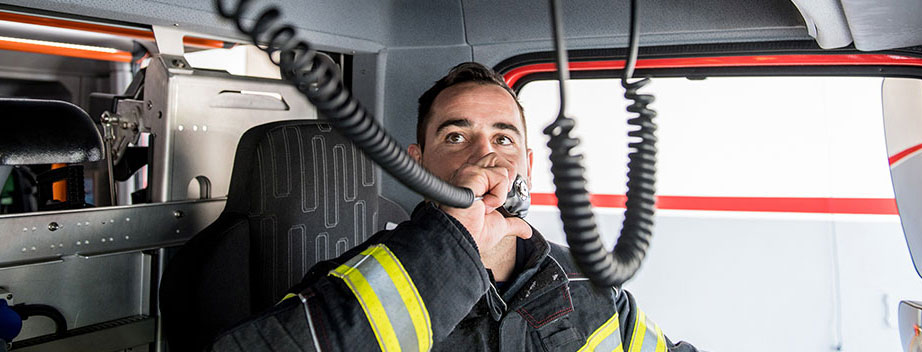
5. Maintenance & Monitoring
So you’ve got your PSN up and running, and the AHJs are all smiling. Job done? No. The job is only done the day they tear the building down. While a public safety network is rarely needed, it’s going to have to be ready 24/7. Every system component that makes up the whole needs to be monitored; DAS/BDAs, amplifiers, boosters, power supplies, backup power, alarms, and of course, control panels.
Nominally monitoring is assumed to be passive, that is; only the actual failure of a key component of the system is detected and somewhere a red light flashes, an automated email message is sent – alerting those tasked with minding the store to undertake repairs. The bottom line is you’re only going to be aware of a failure during a failure. And a failure has equal chances of occurring during an emergency as it does on a long weekend when the building is empty. Passive monitoring is required as laid out by the NFPA and IFC guidelines but opting for proactive vigilance in addition to the necessary standards is more than just a good idea.
Many system failures that can occur prior to an emergency event come with warnings. Anticipating and preventing system breakdown can avoid disruptive and more failures – and in the case of an actual emergency – can save lives. We recommend ongoing, real-time monitoring that gauges system performance, stability, and integrity over time. This can include; measuring and tracking RF input and out power, evaluating fiber loss between nodes, and signaling any parameter changes outside of expected values. Even the most reliable, robust PSN is at the mercy of the building in which it is implanted and more precisely the communication, power, and environmental control infrastructure that serves it. A knowledge of the building’s heating, ventilation and air conditioning systems, and familiarity with local power grid reliability is another step that can help you form a more accurate impression of those factors affecting the operation of your public safety network.
Day-to-day oversight aside, your shiny new PSN isn’t always going to have that out-of-the-box gleam, so it’ll require upkeep, updates and improvements to keep up with evolving technology. The IFC outlines a yearly inspection, or upon any modification to the PSN in the case of structural changes or interior remodeling of the host building that could affect RF signal propagation. Furthermore, all AHJs within the US exercise mandatory annual BDA inspection and testing procedures, even more reason to consider monitoring and maintenance as a priority task.
In the end you can either wait for your public safety network to redline, and hope it’s not during an emergency, or more likely you’ll be hearing the complaints of building occupants or from fire marshals. Or you can strictly follow the monitoring guidelines, including a generous proactive initiative and be in top of the situation before it’s on top of you. Being too careful is a lot like being too healthy. There’s no such thing.
Public Safety Networks
A Singular Safety Solution
Versatile Toolkit Meets Virtual SandBox.
iBwave is at the forefront of wireless network design. It’s a point of pride and it’s systems like Public Safety Networks that we believe serve to illustrate the importance of applying rigorous standards that include comprehensive testing on accurate, up-to-date 3D models of the structure being built. The failure of a PSN isn’t a matter of inconvenience, it’s a matter of life & death. Consumers aren’t going to be forced to delay a selfie, be deprived of email, or be unable to redeem an e-coupon should it go down. They’ll be too busy stampeding for the emergency exits.
iBwave Design, iBwave Public Safety, iBwave Mobile Note, iBwave Unity, and iBwave Viewer all play a crucial role in the creation of wireless networks of all types – all of them having one thing in common; best-possible coverage and/or capacity, exceptional reliability and when required, multiple redundancies. If ever there was a network type that needed our expertise, is it the Public Safety Network.
iBwave works closely with the Safer Buildings Coalition, and so works on the front line of Public Safety Network design. Our familiarity with the ever-changing requirements of the NFPA and IFC means we’re aware of new technologies and revisions to rules and regulations. We design our software accordingly – ensuring that it evolves as standards and practices do. What once took many times more man hours and expense to do is made infinitely easier with the tools we put at your disposal.
Let’s explore them.
iBwave Design
iBwave Design is the flagship of our software triumvirate. It can model, test, and debug high-efficiency virtual wireless networks as installed on 3D architectural plans. Floor plans allow designers to navigate buildings ang designating areas requiring critical coverage.
iBwave Design is unique in its ability to adjust the parameters of a virtual wireless network design to assure continuous compliance with NFPA, IFC, and by extension AHJ and fire marshal requirements during the entire design stage. As building design changes or materials are altered, it responds accordingly.
Antenna, amplifier, booster and indeed all wireless network infrastructure placement is made simpler and their estimated operating parameters more accurate by outputting RF signaling maps that illustrate the efficiency of any given configuration. Report generation tools give you breakdowns of coverage, capacity, Tx, signal strength, interference patterns, and many more.
Whether you’ve managed to place all virtual components or are in the midst of a partial design it’s easy to obtain a clear picture of how the Public Safety Network will perform in the crucial 700 MHz bands. Working from pre-installed NFPA and IFC standards as a baseline and with equipment chosen from a NEMA-approved inventory, you’ll be able to generate targeted heatmaps that correspond to signal strength, SNR, interference and coverage for your PSN. Prediction results give the user an accurate gauge of anticipated network performance. Used before and during construction of the physical space it can serve to guide architects so that RF signal propagation is improved by design decisions. The 3D predictions produced by iBwave Design are a treasure trove of vital RF information PSN designers can’t afford to be without. What’s more, it’s the ideal tool for seeing into the future; extrapolate the occupancy parameters a decade ahead, adjust for imminent structural materials standards changes, tear down walls, or even add subterranean levels. If it can happen in the real world, it can be simulated in iBwave design.
In short, iBwave Design lets you optimize your PSN model so that it meets and anticipates future AHJ compliance standards. Outside of the virtual realm it streamlines grid testing during commissioning by entering values obtained during a walkthrough.
iBwave Design is an unparalleled sandbox environment, created by wireless network designers for wireless network designers. Time and time again it has demonstrated that nothing comes close to the real thing, short of deploying a true physical prototype, testing it, debugging, reinstalling, and testing it again.
iBwave Public Safety
Our iBwave Public Safety solution was launched in 2020 and is a more affordable alternative dedicated to designing public safety networks. iBwave Public Safety makes it easy to design and simulate network performance for greenfield or existing buildings, and accelerates the approval process with building owners and AHJs by presenting detailed standardized documentation.
The solution offers many of the features found in iBwave Design such as 3D modeling, precise attenuation materials, network traffic simulations and heatmaps that correspond to signal strength, SNR, interference and coverage, plus a whole lot more.
With iBwave Public Safety you can design reliable Public Safety networks using active or passive DAS on all public safety bands including P25, Tetra and FirstNet.
Automate and simplify the design your public safety networks to reduce your time to deployment using automated link budget calculations and automatic error-checking. Eliminate the risk of over designing a network by modeling your venue in detailed 3D and simulating your network before it’s deployed to optimize hardware placement for the most cost-efficient design.
With over 35,000 precisely modelled parts, you can benefit from the most comprehensive component database on the market to ensure your designs are accurate and will perform as you expect.
iBwave Public Safety lets you test the coverage and throughput of your network before it is deployed using our prediction engine proven and trusted by thousands of customers worldwide. Ensure your network’s availability by simulating traffic in critical and non-critical areas and validate the performance compliance based on key requirements to prevent costly changes post installation.
Once your design is complete you can quickly generate your link budget, equipment lists and compliancy reports to ensure performance criterias are met so you can get your project approved quickly. The free iBwave Viewer lets AHJs review the entire design and network performance in 3D to further accelerate the approval process.
iBwave Public Safety integrates will all the major collection tool vendors. The result is you will spend less time manually transferring data between tools and more time leveraging RF measurements to deliver the most accurate and optimized designs for your customers. Visit our website below to view a list of all compatible third party tools.
iBwave Public Safety is now available to purchase on the iBwave web store.
iBwave Mobile Survey
Available for Android, iBwave Mobile Survey brings fast, efficient site-survey ability to the mobile platform. One single tool allows the user to collect and collate accurate and current site survey information which serves as the raw data iBwave Design will employ to begin the provides the planning, development, virtual testing and eventual deployment of a PSN. Saved into a single file and stored on the cloud, all information pertaining to individual sites is then able to be easily shared with stakeholders through iBwave Unity. iBwave Mobile Survey is also perfectly suited for the post-installation monitoring a PSN, evaluating its performance over time. It’s an elegant, effective site-survey tool that eliminates countless hours of site information processing while dramatically improving the accuracy and viability of your planned network design.
iBwave Unity
No man is an island, and no Public Safety Network designer works in a vacuum. Vacuums are great for stopping fires, but working in one does little good for RF signals. Communication, collaboration, and exchange with fire marshals, AHJs, state and local governments, architects, engineers, builders, contractors, building owners, building equipment manufacturers, and makers of safety and communication equipment is essential at every point along the PSN design process.
Corralling and coordinating a large number of stakeholders is no simple feat, and that’s where iBwave Unity shines. As a project management platform, it’s versatile, responsive, and efficient in how it handles mission-critical data and ensures targeted distribution to stakeholders. iBwave Unity stores it all on iBwave Drive, which is made available to all project participants.
Every bit of project information is centralized, changes are reflected at once, and made available to all. Everyone’s on the same page, because everyone is reading the same book, at the same time.
For a project as sensitive as a PSN, enhancing collaboration, productivity and cohesion are paramount. iBwave Unity does that. Visualize the impact of design changes on the bottom line, fine tune schedules all stages of the project, from initial design studies, to deliverables, to installation, testing and commissioning of a Public Safety Network. Searchable and designed to be automated, iBwave Unity manages the details that are the reality of a PSN project. Guardian of the lifecycle, protector of process, and sentinel to scheduling, it assists in the integration, dissemination and continuous updating of everything that anyone needs to know.
Conclusion
iBwave has introduced over 1100 clients in more than 100 countries to the importance of wireless network design based on accurate predictive modeling. Success comes as a result of countless person-years of cumulative experience coupled with an expertise made possible by innovation, rigorous application of the latest know-how, technology and best practices. That we’ve applied it to the design of Public Service Networks should come as no surprise – it’s exactly the type of critical end-use we hope our products can contribute to.
We’re housed in modern offices, typical of many you’ll find in urban centers. It’s a location we wouldn’t have considered had it not been equipped with a well-designed PSN, able to withstand fire events. Thankfully, local fire codes and regulations are stringent, which adds another level of safety to our current status as occupants of a large commercial building. That our lives, and our bottom line depends on a well-designed, fully compliant PSN can only serve to illustrate the importance we place upon the quality of our software and its ability to deliverer accurate, reliable Public Safety Network design, 3D modeling & testing.
We felt it was important to cover this topic – it’s more than just good business, it’s good policy. The growing importance of Public Safety Networks can be directly traced back to the efforts of the NFPA, and the IFC, the influence of the Safer Buildings Coalition, the broad reach of FirstNet, and we hope, the valuable products and services iBwave provides that make their development and implementation far easier than it might have been in the past.
Business is public service, or at least it should be viewed that way. iBwave employs over 150 wireless technology professionals and it’s their experience & expertise that are part of countless Public Safety Networks around the globe, and, we hope, every life that they might one day save.

